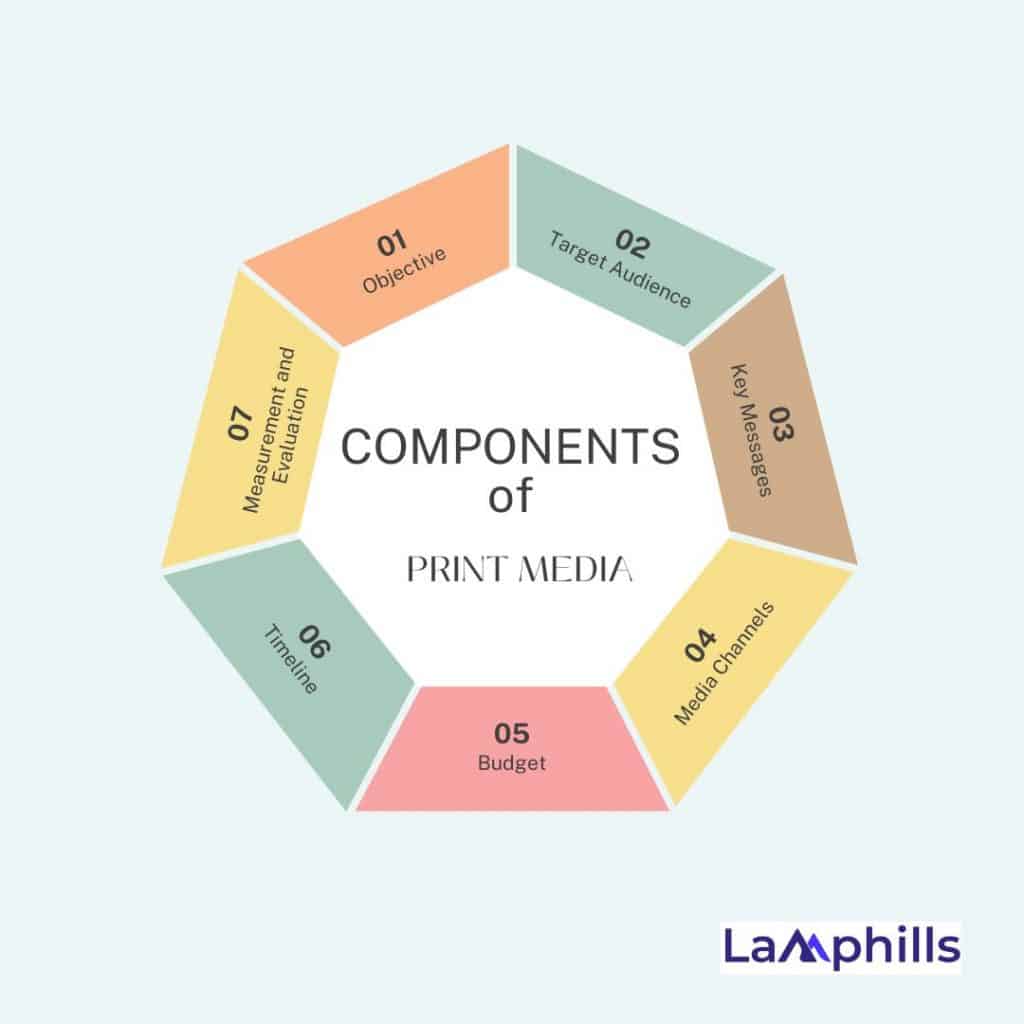Spokespeople are generally always busy, either reviewing the outcome of their previous interviews or preparing for new ones. Introducing a media brief is one of the best ways to prepare them for the following interview. Even experienced professionals can feel lost or unprepared without this vital tool. Here, I’ll explain why a media brief is important, what it should include, and give you easy tips on how to write one.
Key Points
- A media brief is a concise document that outlines the key elements of a media campaign. It is a guiding document for everyone involved, ensuring clarity and alignment.
- A clear media brief includes an objective, the target audience, key messages, media channels, budget, timeline, measurement, background information, stakeholders, etc.
What is a Media Brief?
I was extremely excited about conducting my first interview. However, when I received my media brief, I was suddenly stopped in my tracks. I realized that without the brief, I would have likely made a mess of the interview. The brief provided crucial information and guidance that I hadn’t considered before, highlighting the importance of preparation and making me appreciate the value of having a structured plan. What, then, is a media brief?
A media brief is a concise document that outlines the key elements of a media campaign. It is a guiding document for everyone involved, ensuring clarity and alignment. Unlike other types of briefs, such as a creative brief, a media brief is specifically focused on the strategy for media placement and communication.
A good media brief ensures that everyone—from your marketing team to external partners—understands the campaign’s objectives, target audience, key messages, media channels, budget, timeline, and metrics for success. This clarity is important for executing a successful campaign.
Key Components of a Media Brief

To write an effective media brief, you need to include several key components:
#1. Objective
The objective is the foundation of your media brief. It’s a clear statement of what you want to achieve with the campaign. Objectives should be SMART: Specific, Measurable, Achievable, Relevant, and Time-bound. This means clearly defining the desired outcome, such as increasing brand awareness, driving website traffic, generating leads, or boosting sales. For example, “Increase online sales by 20% in the next quarter” is a specific and measurable objective.
#2. Target Audience
If you don’t understand your audience, you’ll never get anything out of your campaign. Understanding your target audience will help you craft compelling messages and select the appropriate media channels. This section should provide a detailed description of who you’re trying to reach. Include demographic information like age, gender, income, education level, and geographic location. Review psychographic details such as interests, behaviours, values, and lifestyle choices. For instance, if you’re targeting millennials, include insights into their media consumption habits and preferred social platforms.
#3. Key Messages
Your key messages are the core points you want your audience to remember. These should be clear, concise, and aligned with your brand’s voice and values. Primary messages are the main points you want to convey, while secondary messages support and reinforce the primary ones. Ensure these messages address your audience’s pain points and highlight the benefits of your product or service. For example, if you’re promoting a new eco-friendly product, your primary message might focus on sustainability, while secondary messages could highlight cost savings and health benefits.
#4. Media Channels
You must select the right media channel to effectively reach your target audience. This section should list the media channels you plan to use, such as social media platforms, print publications, TV, radio, or online advertising. Consider where your target audience spends their time and which channels are most effective for your campaign goals. For instance, if your audience is highly active on Instagram and Facebook, prioritize these platforms for your social media efforts.
#5. Budget
Your budget outlines the financial resources allocated for the media campaign. This includes costs for media placement, creative development, production, and any additional expenses. Break down the budget by channel and activity to ensure you can track spending and make adjustments as needed. It’s crucial to align your budget with your campaign objectives and the chosen media channels. For example, if TV ads are a significant part of your strategy, ensure you allocate enough budget for prime time slots.
#6. Timeline
The timeline is a detailed schedule for your campaign, including key milestones and deadlines. This helps in keeping the campaign on track and ensuring timely execution. Include dates for creative development, media placements, launch, and any significant events. Use project management tools to visualize the timeline and track progress. For example, if you’re planning a holiday campaign, your timeline should account for the busy shopping season and include deadlines for ad submissions well in advance.
#7. Measurement and Evaluation
Determine how you will measure the success of your campaign. This section should define the metrics and KPIs (Key Performance Indicators) to evaluate performance. Metrics could include impressions, click-through, conversion, sales figures, or engagement rates. Establishing clear evaluation criteria allows you to track progress and make data-driven decisions. For instance, if increasing website traffic is a goal, monitor metrics like page views, bounce rates, and time spent on site.
#8. Background Information
To contextualize the campaign, provide relevant background information about the brand, product, or service. This could include the brand’s history, mission, and unique selling points. For a new product launch, include details about the product’s features, benefits, and any market research that supports the campaign. This background helps everyone involved understand the broader context and align their efforts with the brand’s identity and goals.
#9. Stakeholders
Identify the key people involved in the campaign and their roles. This includes internal team members, external agencies, and any other stakeholders. Clearly defining roles and responsibilities ensures everyone knows who is responsible for what, facilitating smoother collaboration and communication. For example, specify who is in charge of content creation, media buying, and performance tracking.
How To Write a Media Brief

Now, the main part; how do you write an effective media brief? Follow these simple steps:
#1. Define the Objective
First, clearly articulate what you want to achieve with your campaign. Ensure your objectives are SMART: Specific, Measurable, Achievable, Relevant, and Time-bound. For example, “Increase online sales by 20% in the next quarter” is a clear and measurable objective. This helps set a clear direction for your campaign and provides a benchmark for measuring success.
#2. Identify the Target Audience
Next, dive deep into understanding your audience. Use market research, customer data, and personas to paint a detailed picture of your ideal audience. Knowing who you’re targeting helps craft relevant messages and choose the right media channels. For instance, if your target audience is working professionals aged 30-45, research their media consumption habits and preferences, such as which social media platforms they use and what type of content they engage with.
#3. Craft Key Messages
Your key messages should be concise, memorable, and aligned with your brand’s voice. These messages should address your audience’s pain points and highlight the benefits of your product or service. Develop a primary message that captures the core of your campaign, supported by secondary messages that reinforce and expand on the primary one. For example, if you’re promoting a fitness app, the primary message could be “Achieve your fitness goals with personalized training plans,” while secondary messages might include “Track your progress with advanced analytics” and “Join a community of fitness enthusiasts.”
#4. Select The Right Media Channels
Choosing the right media channels is crucial. Consider where your target audience spends their time and which channels are most effective for reaching them. Research media consumption trends and align your channel selection with your campaign goals. For instance, if your audience is highly active on social media, prioritize platforms like Instagram, Facebook, and LinkedIn. Additionally, consider traditional media channels if they align with your audience’s preferences.
#5. Set the Budget
Your budget should be realistic and aligned with your campaign goals. Break down your budget by channel and activity to ensure you can track spending and make adjustments as needed. Allocate funds based on the importance and cost-effectiveness of each channel. For example, if digital advertising on social media and search engines is a significant part of your strategy, ensure sufficient budget allocation for these channels. Also, consider setting aside a contingency fund for unexpected expenses.
#6. Develop the Timeline
Create a detailed timeline that includes all major milestones and deadlines. This helps in keeping the campaign on track and ensuring timely execution. Use project management tools to visualize the timeline and track progress. For example, if you’re planning a product launch, include deadlines for creative development, media buying, and launch events. Regularly review and update the timeline to accommodate any changes or delays.
#7. Establish Measurement and Evaluation Metrics
Determine how you will measure the success of your campaign. Define your KPIs and set up tracking mechanisms. Regularly review these metrics to evaluate performance and make data-driven decisions. For instance, if your objective is to increase website traffic, monitor metrics like page views, bounce rates, and conversion rates. Use tools like Google Analytics, social media insights, and CRM systems to gather and analyze data.
Common Mistakes to Avoid
Before you begin to write a media brief, you should be aware of these common pitfalls and how to avoid them:
- Lack of Clarity in Objectives: Be as clear and specific as possible. Vague objectives lead to confusion and ineffective campaigns.
- Misidentifying the Target Audience: Use accurate data and research to define your audience. Incorrect audience targeting results in wasted resources and poor engagement.
- Ineffective Key Messages: Ensure your messages are compelling and relevant. Weak messages fail to resonate with your audience and dilute your campaign’s impact.
- Poor Selection of Media Channels: Choose channels that align with your audience’s preferences. Ineffective channel selection leads to low reach and engagement.
- Overlooking the Importance of a Detailed Timeline: A detailed timeline ensures timely execution. Without it, campaigns can fall behind schedule and miss critical deadlines.
- Inadequate Measurement Metrics: Without proper metrics, you can’t evaluate the campaign’s success. This makes it difficult to optimize and improve future campaigns.
Examples and Templates
To help you get started, I recommend using media brief templates. These templates can provide a structured format to ensure you include all the necessary components. Analyze successful media briefs from various industries to understand how they are crafted and what makes them effective. You can start by downloading the template below:
What Is The Objective Of A Media Brief?
The objective of a media brief is to provide a clear, concise roadmap for a media campaign, ensuring alignment among all stakeholders on goals, target audience, key messages, media channels, budget, timeline, and success metrics, facilitating effective and coordinated execution.
What Is A Media Briefing?
A media briefing is a structured meeting or document where key information about a campaign or event is shared with journalists and media representatives. It aims to provide clear, concise, and relevant details to ensure accurate and effective media coverage.
How To Run A Media Briefing?
To run a media briefing, prepare a concise agenda, present key messages clearly, introduce speakers, provide background information, allow time for Q&A, and distribute press kits. Follow up with attendees, provide additional resources, and ensure all key points are covered.
How To Write A Social Media Brief?
To write a social media brief, define the campaign objective, target audience, key messages, and chosen platforms. Include budget, timeline, and metrics for success. Provide brand guidelines, creative direction, and stakeholder roles to ensure clarity and alignment.
How Do You Start A Briefing Statement?
To start a briefing statement, clearly state the purpose and scope of the briefing. For example: “The purpose of this briefing is to outline the media strategy for our upcoming product launch campaign, targeting key demographics to increase brand awareness and drive sales.”
What Makes A Good Briefing?
A good briefing is clear, concise, and comprehensive. It defines specific objectives, identifies the target audience, outlines key messages, selects appropriate media channels, allocates a realistic budget, sets a detailed timeline, and establishes measurable success metrics.
In Conclusion
A well-written media brief is essential for the success of any media campaign. It serves as a roadmap, ensuring that everyone involved is aligned and working towards the same goals. By following this step-by-step guide, you can create a media brief that sets your campaign up for success. Remember, the key is clarity, precision, and thoroughness.






